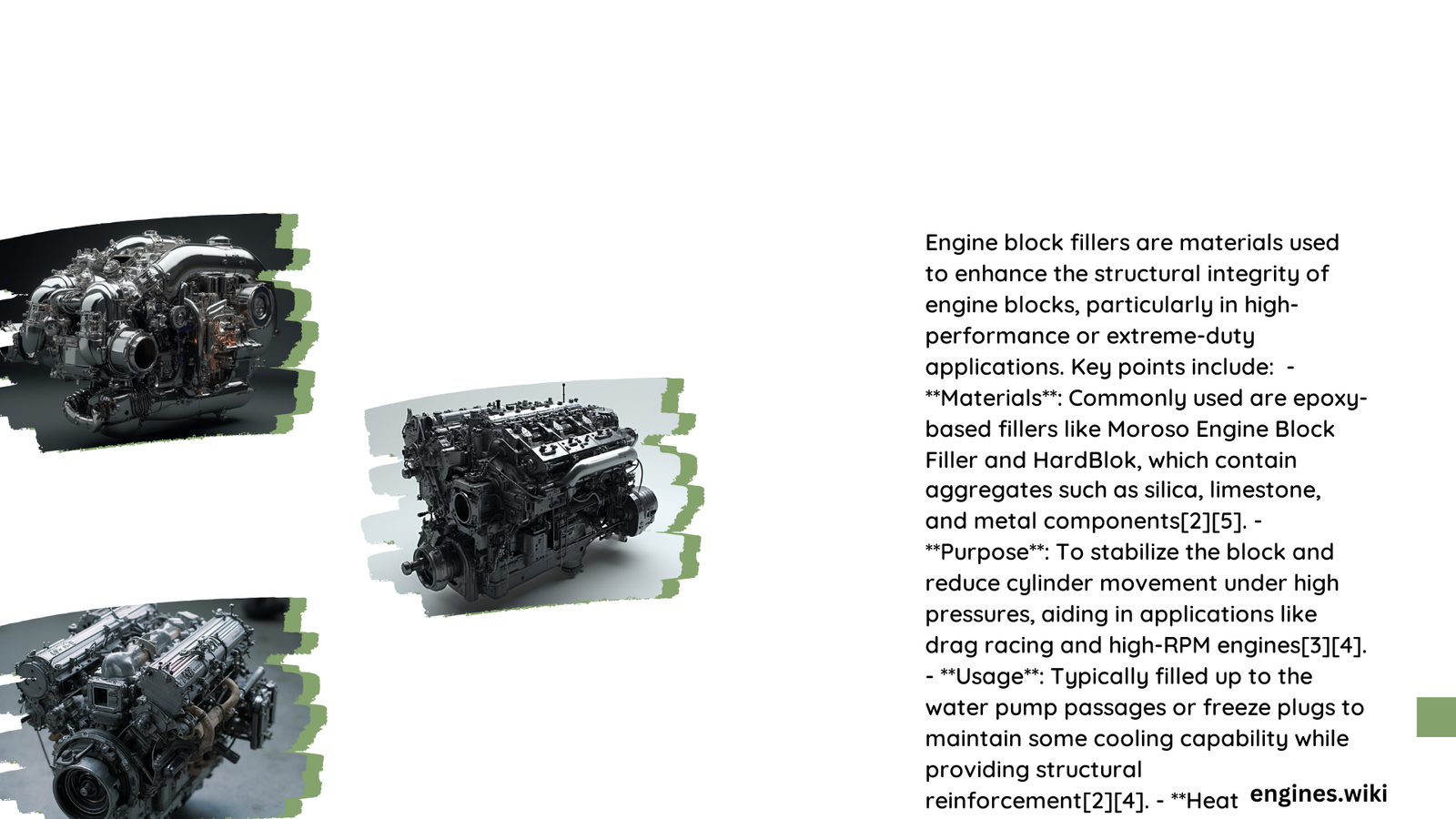Engine block fillers represent a critical solution for automotive enthusiasts and mechanics seeking to enhance engine structural integrity, seal microscopic imperfections, and optimize performance. These specialized compounds provide a strategic approach to reinforcing engine blocks, addressing potential coolant passage weaknesses, and creating a more robust foundation for high-stress mechanical environments.
What Are Engine Block Fillers?
Engine block fillers are specialized compounds designed to seal, strengthen, and stabilize engine block water passages and structural components. These materials serve multiple critical functions:
- Structural Reinforcement: Provide additional strength to cylinder walls
- Leak Prevention: Seal microscopic passages and potential crack points
- Thermal Management: Optimize heat distribution and structural stability
What Chemical Compositions Exist for Engine Block Fillers?

Epoxy-Based Fillers
| Composition | Key Components | Performance Characteristics |
|---|---|---|
| Moroso Filler | Epoxy Resin, Silica | High Structural Integrity |
| HardBlok | Aggregate Compounds | Quick Curing, Thermal Resistant |
| KRC #554 | Xylene, Epoxy Compounds | Versatile Application |
Aggregate Characteristics
- Silica Content: Enhances thermal stability
- Limestone Additives: Improves structural bonding
- Quartz Components: Increases mechanical resistance
How to Prepare Engine Block for Filler Application?
Surface Preparation Checklist
- Thoroughly clean engine block surfaces
- Remove existing debris and old fillers
- Lightly sand contact areas
- Ensure complete degreasing
- Verify surface is completely dry
What Are Installation Best Practices?
Critical Application Steps
- Use manufacturer-recommended mixing ratios
- Apply in well-ventilated environment
- Maintain consistent temperature during curing
- Follow precise waiting periods before machining
What Performance Benefits Can Be Expected?
Quantifiable Advantages
- Weight Impact: Minimal increase (8-10 pounds)
- Thermal Efficiency: Enhanced structural stability
- Pressure Resistance: Improved cylinder wall integrity
What Potential Challenges Might Occur?
Common Installation Considerations
- Monitor potential overheating risks
- Verify complete passage coverage
- Check for potential shrinkage issues
- Ensure proper adhesion techniques
Who Should Consider Engine Block Fillers?
Recommended User Profiles
- Performance racing enthusiasts
- High-stress engine builders
- Automotive restoration specialists
- Competitive motorsport teams
What Tools Are Required?
Essential Equipment
- Protective safety gear
- Mixing containers
- Application tools
- Cleaning solvents
- Precision measuring instruments
Conclusion
Engine block fillers represent a sophisticated solution for automotive performance enhancement, requiring meticulous application and comprehensive understanding of mechanical dynamics.
